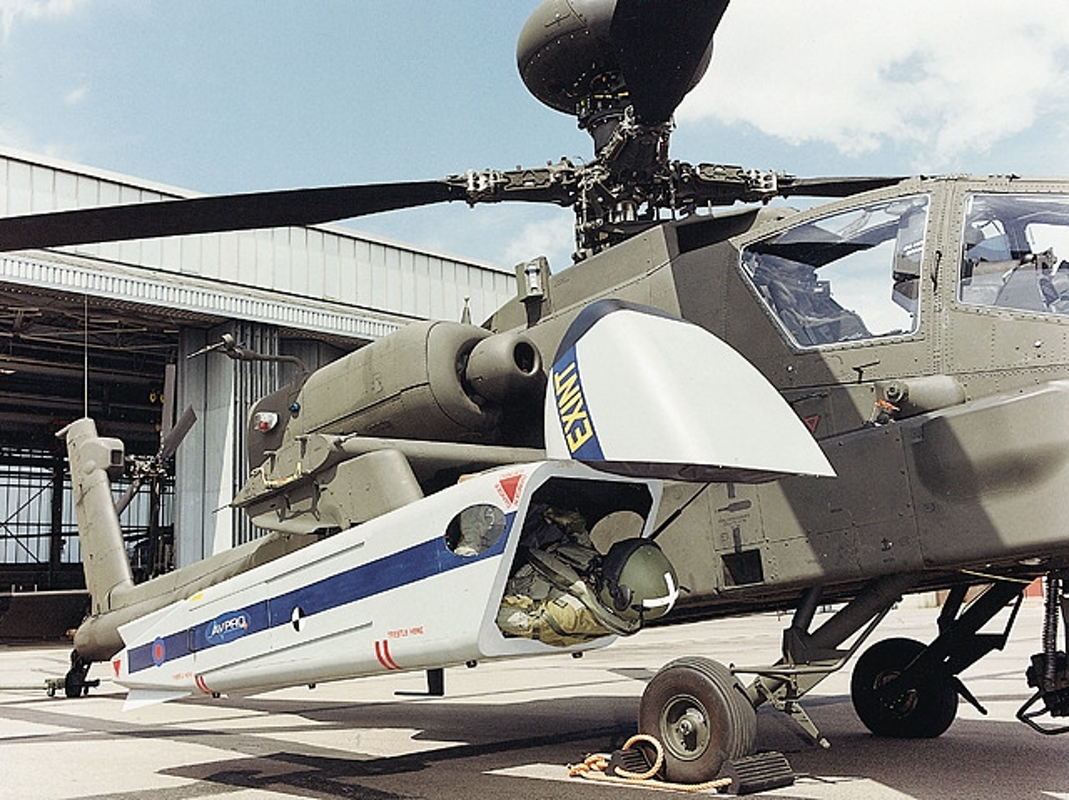[ad_1]
Beginning in World War II, air forces around the world have been interested in developing human-carrying external pods for aircraft. These ideas have ranged from advanced concepts, such as pods designed for modern aircraft like Harrier Jump Jets and Apache Attack helicopters, to simple ideas like bags strapped to airplane wings.

One key reason for developing external pods for military aircraft has been to rescue downed pilots and wounded service members. Other possible missions include transporting special forces personnel, spies, and support personnel like crew chiefs and relaying others between locations.
Weight of Human-Carrying External Pods No Problem for Fighters
Fighters are actually well-suited for these tasks. They often carry external fuel tanks and ordinance that weighs more than pods containing people. If pods or containers have aerodynamic shapes, the fighter’s performance will not be impacted more than those carrying tanks or missiles.
EXINT Pod System Designed for Harriers and Apaches
One of the most modern external pod designs is the EXINT system, which was designed in the late 1990s by the British company AVPRO UK Ltd. The company developed the human-carrying external pods for British Sea Harrier GR5 fighters and AH-64 Apache helicopters. The pods were intended for special forces insertion and extraction missions and for transporting wounded personnel.
AVPRO UK initially made the pods 13 feet long and could carry two people, along with medical and other equipment. The pods had oxygen and heating systems, which enabled use at high altitudes and speeds. In addition, they had parachutes and a satellite-assisted rescue system. Following testing. The company converted the EXINT to a one-person design.

Despite some success in testing the EXINT pods, they never made it into the British inventory; however, they are still certified for Israeli AH-1 Cobra attack helicopters. There were some significant problems with the design.
People Inside Pods Experience Extreme Decibel Levels
The underwing pods were exposed to extremely high noise levels from the Harrier’s Rolls Royce engines. When close up, they produce 165-170 decibels. Besides hearing loss, exposure to extremely loud noises can damage the heart, raise blood pressure, reduce concentration, and affect other cognitive functions.
The pods’ position in relation to the center of the fuselage exposed them to very high G forces and other effects while flying at Mach 1.
British Spitfires Carried People Inside Bags Strapped to Wings
During the Second World War, the U.K. considered carrying people externally on aircraft. Their first version of a human-carrying external pod was the “Spitfire Body Bag.” This was a canvas bag, similar to a sleeping bag, that could fit one person. Two straps attached the bag to the cannon and wing trailing edge. Aircraft with the bags installed could not maneuver as sharply as they normally could.

The idea behind the “body bags” was to transport squadron personnel to remote locations that lacked maintenance or support facilities. While the U.K. considered using them during the D-Day invasion, there’s no record of them being used in actual missions.
American Mounted Human-Carrying External Pods on P-38s
The Americans also experimented with their own version of human-carrying external pods on the P-38 Lightning. They developed modified drop tanks to carry people under the wings. These pods had a plexiglass nose cap.

On 13 and 15 June 1945, US Marine Corps Photographer David Duncan climbed inside the modified drop tank of an F-5, the reconnaissance variant of the P-38. He took photos of USMC Corsairs attacking Japanese positions on Okinawa. Later, he wrote that the pod had no air vents and was “very uncomfortable.”
Russian Pods Could Carry 16 People
In the 1930s, during the Spanish Civil War, the Russians tested their own versions of human-carrying external pods. They designed paratrooper compartments that hung under the lower wings of Polikarpob R-5 biplanes. There were four compartments, each carrying four paratroopers.

The Russians found that the pods created excessive drag, so they added an additional wing below the pod. The increased drag from the pods lowered the plane’s speed from 124 to about 81 piles per hour.
During World War I, the Russians fitted pods under the wings of their Polikarpov Po-2 aircraft. They devised a very unusual or radical mission profile. Once the planes reached a planned destination, they descended to a very low altitude, and soldiers exited the pods without parachutes and aimed for the deepest snowdrifts they could see.
Germans Also Tested Their Versions of Pods
The Germans also tested pods on the Ju-87D-3 Stuka bomber. These pods carried two people, one in front of the other. The pods could be launched in flight and descend under parachutes. Like most other designs proposed by other nations, the German concepts never made it into production.

Most recently, British and Israeli air forces devised a much simpler method for carrying personnel externally on Apache helicopters. This technique is to seat people on the Apache stub wings with seatbelts securing them. British Apache crews used this method several times in Afghanistan to carry wounded soldiers.
[ad_2]
Source link


